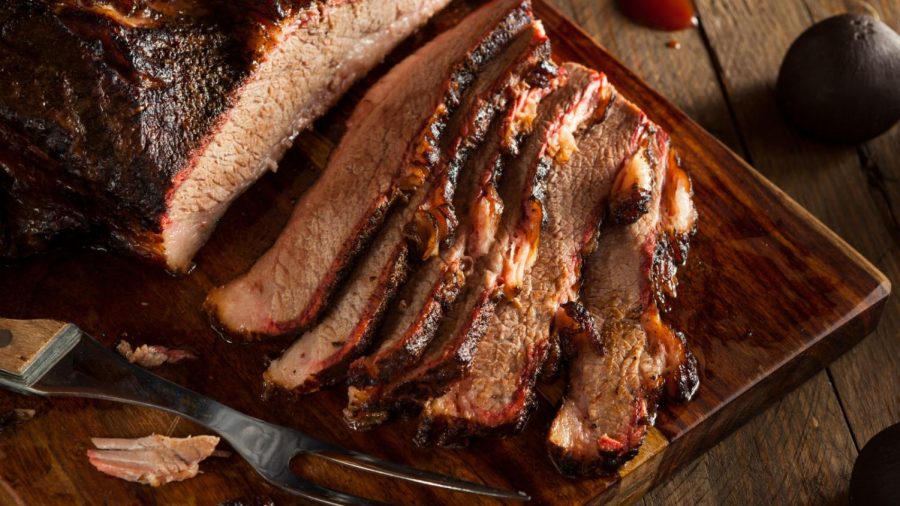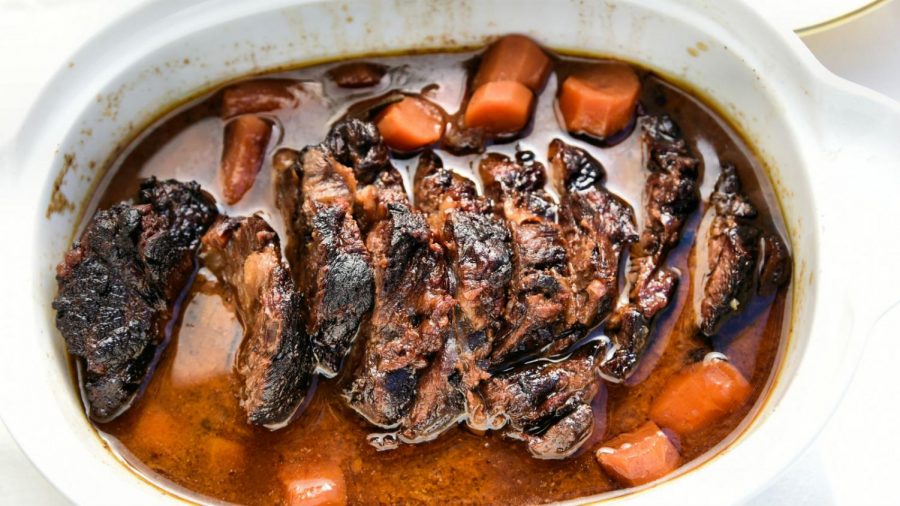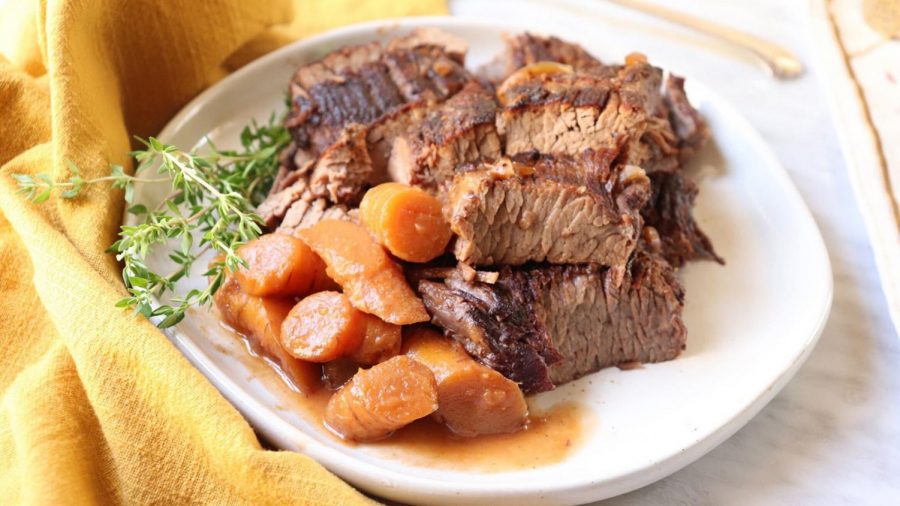Why American Jews Eat Brisket on Rosh Hashanah
The rules of brisket are made to be broken.
Published September 21, 2022
This September, many Jews across the United States will bring in the new year by feasting on a juicy, glistening brisket. But what led this dish to ascend as the star of the Rosh Hashanah meals in America? New Year’s brisket is a story of ingenuity, improvisation and immigrants determined to simultaneously preserve the past while forging a new future.
“Brisket” refers to the cut of meat from the breast or lower chest of domesticated quadrupeds, though most commonly is associated with mature cows (beef brisket) or calves (veal brisket). A piece of brisket tends to weigh around 12 pounds. The term’s etymological lineage can be traced to the Middle English brusket, which comes from the Old Norse brjósk for “cartilage,” thus attending to brisket’s coverage of the sternum, ribs and their connective tissues.
Beginning in 1600s Europe, brisket was widely used as the foundation for corned beef (not exactly the version one might eat on St. Patrick’s Day, though similar), made by curing then boiling the meat. This process resulted in a protein with a conveniently long shelf life, which rendered it practical as well as popular.
ADVERTISEMENT

Brisket became a regular feature of holiday (particularly Passover and Rosh Hashanah) tables among European Jews for several other salient reasons. Because the hindquarters of the cow are not considered kosher, brisket is one of the few large, visually impressive cuts of beef in which Jews could indulge on festive occasions. Brisket was also cheaper as its tough, stubborn texture required roasting at a low temperature for an extended period, which made hungry (and impatient) Gentile customers consider it comparatively less choice for festivities. But, this protracted preparation timeline proved perfect for Jewish cooks, who could begin roasting the brisket just prior to pausing labor for twenty-four hours in observation of the Sabbath — or forty-eight hours for the holidays — and return to retrieve it ready for lunchtime the following day.
The onset of large-scale immigration of Ashkenazi communities, especially from Germany and Czechoslovakia, to the United States in the late nineteenth century set the stage for brisket becoming part of New World Jewish cuisine, and as the diaspora flourished, so too, did the consumption of brisket. In addition being utilized in the production of corned beef, spiced and smoked brisket in the form of pastrami became a popular delicatessen staple.
On Rosh Hashanah, roasting and basting remained the iconic method of cooking brisket for American Jews. However, this technique was by no means one-dimensional, for as these emigrant populations proliferated across the Eastern seaboard and even throughout the South, so, too, did nuances in preparation. Some households adhered to earthy root vegetable-based accompaniments, whose origins date back to seventeenth-century shtetls, but those more upwardly mobile immigrants also began experimenting with richer, pricier foodstuffs such as red wine and tomatoes. Others began to employ new locally-sourced ingredients, such as molasses and sorghum, to produce sweet-savory iterations, while some borrowed from other ethnic cuisines, inflecting their briskets with dashes of soy sauce.

ADVERTISEMENT
Following the Second World War, the processed food revolution prompted many Jewish home cooks to swap tomatoes fresh from the Victory garden in favor of Heinz ketchup, while newfound interest in tropical fruits due to vets returning from the South Pacific as well as increased travel to Hawaii meant pineapple even sometimes made its way into brisket marinades and garnishes.
Some American Jews, particularly those south of the Mason-Dixon line, decided to try imitating their neighbors and forgo roasting brisket altogether in favor of smoking. Thus, the South saw the rise of smoked seder brisket alongside the development of the cult barbeque brisket, and while these cookery practices may have initially been cultivated in parallel, over the years, the lines between what might be considered acceptable “rodeo” vs. “Rosh Hashanah” brisket have become deliciously blurred.

Today, restaurants and chefs continue to roll out unorthodox renditions. See, for example, Nach Waxman’s brisket featuring fish sauce or Kristin Eriko Posner’s Japanese-inspired mirin-miso barbeque brisket. There are even recipes, like this one for bourbon and coffee brisket with cranberries, which seem equally (if not more) appropriate for mainstream, non-exclusively Jewish holidays (i.e., Thanksgiving) suggesting that brisket has become so beloved by American Jews that it has supplanted turkey and other more “traditional” celebratory proteins. However, when it comes to Rosh Hashanah brisket, history repeats itself. The “rules” of brisket will always be made to be broken.
















